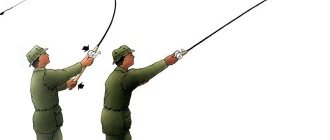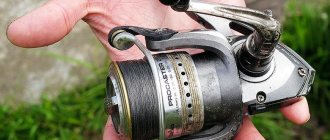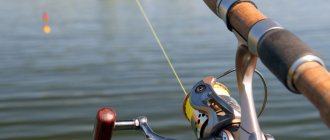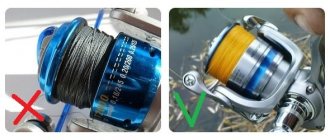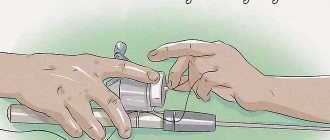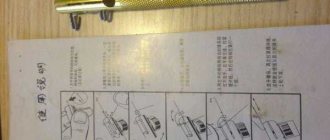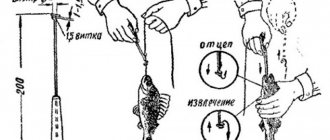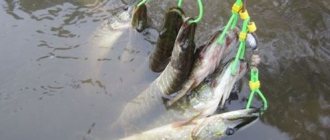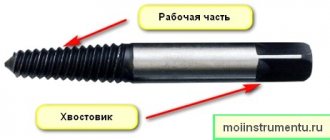Catching predatory fish has always been of particular interest to the fisherman due to the opportunity to prove himself in the fight against a worthy and cunning opponent. The invention of the spinning fishing method led to its improvement, one of the results of which was the invention of the inertia-free spinning reel.
The inertia-free reel replaced its less convenient and productive predecessor - the inertial reel. He liked to give this accessory as a gift during the fishing process - a beard made from a fishing line, thereby ruining the whole fishing trip. The new invention completely solved this problem and streamlined a number of other problematic issues related to casting bait, retrieving it and landing fish.
What does a reel consist of?
Today, the fisherman will no longer be surprised by the futuristic appearance of the inertia-free machine, which, taken together, represents a complex complex mechanism assembled in a durable case made of plastic or metal materials. The body has a leg for attaching the mechanism to the rod saddle. A spool is mounted on the axis of the mechanism that transmits rotational-translational movements. Control of the release of the cord from the spool and its winding is controlled by the folding bracket of the line guide. The mechanism has a controlled brake or clutch and a handle for transmitting rotation to the gears of the mechanism.
The design of a spinning fishing reel and its operating principle
Inertialess spinning reels are a complex mechanism based on the laws of motion transmission through gear shafts and bearings. The handle drives the rotor and the line layer combined with it. The handle transmits movement with a certain gear ratio due to the interaction of different size gears. The line laying bracket, rotating around a stationary spool, places the reeled line on its surface. The spool, mounted on the main shaft of the entire mechanism, makes reciprocating movements, evenly distributing the cord wound on the bobbin. The very principle of operation of an inertia-free reel allows you to cast accurately and accurately, without controlling the descent of the cord or tracing its winding. These actions are fully automated by the spinning reel design.
The main pair and the spool feeding device are concentrated in the meat grinder body. The combined design of these two elements is called the rotor mechanism. The main shaft gear receives momentum from the rotor wheel. The handle, moved by the fisherman's hand, is the generator of the movement of the wheel in the rotary mechanism. It is attached to the shaft using edges and a hole specially made for them.
The gearbox is the main pair, which has a specific gear ratio. The complex design of the mechanism in no way causes difficulties or inconveniences in terms of using a spinning reel in practice when fishing. The faster the angler rotates the handle, the faster, as a result of interaction with the drive, through the selected gear ratio, the speed of rotation of the rotor increases. In this way, as a result of the selection of the gear ratio of the mechanism, determined by its characteristics, various conditions are provided for the speed of wiring and winding of the cord when fishing.
Its structure and important parameters
In order to better understand how to use a fishing reel, it is useful to know what it consists of, its structure and the main differences from other types of reels. You need to know that they come in three main types:
- Inertial (the simplest and most reliable mechanism).
- Multiplier. This is a more complex mechanism that has much in common with inertial coils, but stands apart.
- Inertialess.
At the same time, it is important to understand that if you know well, for example, how to properly use a multiplier reel, or a standard inertial reel, this does not mean that you will work just as well with a spinning reel.
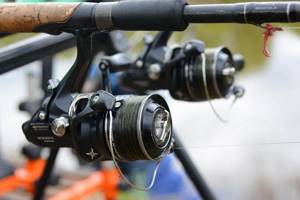
Each inertia-free unit consists of the following main parts:
- The body is made in one piece with the mounting tab. It is usually made of aluminum alloys or high-quality plastic. It contains the elements of the main mechanism.
- A rotor with a line-laying arm and an automatic folding mechanism. The main function is to wind the fishing line onto the spool.
- Spool , where the volume of fishing line is located. They are also made from aluminum alloys or high-quality abrasion-resistant plastic.
- Rotating handle. With its help, the angler sets the entire reel mechanism in motion. Thanks to her, this type of reel is often popularly called “meat grinder”. They actually have a vague resemblance in appearance.
In addition, a separate friction brake , which serves to regulate the load sufficient to rotate the rotor when hooking large fish or when hooking. The adjusting screw of this mechanism on a spinning reel can be located in front - at the end of the spool, or at the back.
The main difference between this type of coil and inertial coils is that:
- The main axis , on which the drum is fixed, in working condition is located parallel to the axis of the fishing rod. For inertial coils and multipliers - perpendicular.
- When casting the bait, the line comes off freely from the end of the stationary spool. No rotation of the drum occurs, which means there is no inertia force that usually arises during rotation.
In addition to understanding the structure and principle of operation of the coil, it is important to know its main quality parameters, by which the consumer features of each model are assessed. They need to be taken into account both when purchasing it in a store, and directly when equipping and fishing with it. These options include the following:
- Gear ratio of the mechanism. This parameter indicates the number of rotor revolutions for one full revolution of the handle. It is applied in the form of a ratio of certain numbers on the body, for example: 4.6:1, 5.3:1.
- The number of bearings involved in the mechanism. The more there are, the smoother and more stable the reel operates.
- Bobbin capacity. This characteristic is also indicated on the body and shows the amount of fishing line of a certain section for which it is designed. For example, the number 1500 shows that this reel will place 100 m of fishing line with a cross-section of 1.5 mm on its spool.
- The material from which the spool is made. In more expensive, professional models, these are usually more durable and practical aluminum alloys.
- Dimensions and weight of the reel.
It is important to know that by the number indicating the capacity of the spool, you can compare the power of different mechanisms . Thus, a reel designated 3500 is more powerful than a reel designated 3000, which means it is designed for heavier tackle and catching stronger fish.
When fishing with a spinning rod, this characteristic determines which rod it should be placed on for greater efficiency and harmony of gear, a light one or a heavier one, and how to use the spinning reel.
How to choose a spinning reel
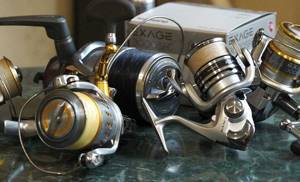
The choice of a spinning reel is based on its design features, which increase performance and comfort when using it. The number of bearings in the mechanism increases the smoothness and durability of its use. Bearings in a good-quality reel replace all plastic bushings, and their number can reach thirteen.
The friction brake has an important component in controlling the movement of the spool and creating conditions to reduce stress when the fish jerks and the bait hooks. It can be located at the rear of the reel or combined with the spool mount in its front. The inertia-free reel is equipped with a spool, which in the ideal configuration of the mechanism has two more spare options.
Depending on the fishing conditions, the spool has three types of shape:
- cylindrical;
- conical;
- reverse cone shape.
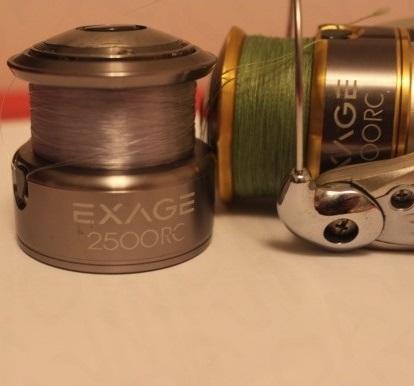
Spools vary in the size of the cord they can accommodate and, according to this criterion, have their own markings, indicating the diameter of the fishing line and the possible amount of its laying. The gear ratio characteristic determines the ratio of the number of turns of the handle to the number of turns of the rotor during the same period of time. Depending on the gear ratio in the inertia-free reel design, they are divided into ranks: power (3.2 to 4.2 revolutions), universal (4.5-6.1) and high-speed (6.2-7.2).
To balance the gear, fishing reels must have a relatively low mass. The weight directly depends on the material from which the inertia-free parts are made. More durable materials also have greater mass, so a high-quality product has weight, but the weight is adequate for its shape. The ultra-lightweight design may well indicate low-quality parts in the device. On average, the weight of even the largest meat grinder does not exceed 600 grams, small representatives fluctuate around 200.
Basic rules for using a spinning reel
Of course, every self-respecting angler should know how to use a spinning reel installed on his fishing rod, what loads it is designed for, what can be expected from it in a given situation and how it needs to be configured for effective operation.
Due to their versatility, they are in high demand among different categories of fishermen, so manufacturers produce different models that can more fully satisfy their needs. Let's consider the most important nuances that need to be taken into account when operating inertia-free motors.
How to choose a reel
The inertia-free gear is selected according to the principle of harmony and compliance of its parameters with the intended type of fishing. For trolling and feeder fishing, reels are selected taking into account the traction characteristics. The power type of coil is exactly in this topic. By the way, the reel for sea fishing also belongs to its power version. The friction brake in the rear position is more convenient and practical for slow fishing.
In match fishing, when equipping a Bolognese fishing rod and fishing with a bombard, universal type reels are preferred. Cone-shaped spools allow you to throw equipment far enough with the least effort. The friction in the front part of the meat grinder makes it possible to quickly adjust it even during the actual fishing of fish or hook.
When choosing a spinning reel for winter fishing, jigging, twitching and ultralight, we focus on its size and high speed characteristics. Here, speed types are a priority. Pay attention to the attachment of the reel to the spinning rod.
Important! The reel leg should fit into the sliding seat without any noticeable tension and be clamped without even the slightest amount of play.
Choosing fishing line for the reel
The type of cord for equipping fishing tackle is selected depending on the type of fishing. As a rule, in feeder fishing and in most spinning disciplines, braided cords are used.
Important! The spool must accommodate a sufficient amount of cord for the casting distance, so that until the end of its edge, after laying it, there remains a free space of at least two millimeters. This distance allows you to throw the equipment without chaotic dropping of the rings.
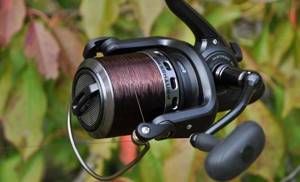
For match and Bolognese gear, fishing lines are mainly used. Fishing lines are used with smaller diameters and sometimes, to achieve optimal winding volume, a backing winding, the so-called base, is used, made of a material larger in diameter than the main fishing line.
Important! When purchasing reels, be sure to pay attention to the condition of the spool surface, which should be smooth and not have even the slightest roughness. Otherwise, these inconsistencies will lead to noticeable defects in both fishing line and cord.
How to make an accurate cast with a spinning rod
The accuracy and range of casting tackle is achieved with well-placed equipment. Maximum accuracy can be achieved only in one way - the overhead swing method. In order for the throw to be accurate, you need to move the shaft behind your head and prepare to swing.
The trajectory of the tackle must be straight. After the swing, you need to make sure that the rod tip remains in the forward position. The flight distance of the bait is controlled using a finger, which slows down or stops the entire process by clamping the line.
How to use a spinning reel
As mentioned above, the reel is installed on a spinning rod in a special device based on the principle of pressing the base of the mechanism leg through a screw drive. After installation on the rod, the operation of winding the cord onto the spool is performed. The cord is fed from the tip of the rod, through the rings, to the spool. The line guide opens and the line or braid is tied to the spool. Then close the line layer and wind the cord in the required quantity.
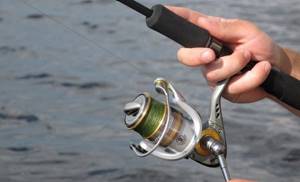
Important! The winding cord must be as tight as possible. In this case, the initial tight arrangement of the turns will ensure further correct shedding of the rings and the same correct winding.
Without winding the line about 2 mm to the end of the side of the spool, winding is completed. The line laying machine is closed. During this movement, the line automatically falls on the feed roller on the line laying arm. Set the clutch settings to two-thirds of the force, the critical value for breaking the cord. The tackle is ready for further manipulations with the equipment.
The cast is done with the shackle open. The fishing line is pressed against the blank with the index finger and an even, smooth swing is made, followed by feeding the bait to the fishing point. The finger must simultaneously release the line at the moment of casting. Having presented the bait, the line-laying arm is closed and wiring begins. The spinning rod with a spinning reel is in full operation, all that remains is to wait for the bite and get the long-awaited catch in the cage or on the kukan.
Friction or friction brake of the reel - how to set it
The friction brake is an important component of a spinning reel. Its main “strategic” task is to protect the line from breaking, and the tackle from possible breakage under dangerous loads. An equally important “tactical” task is to smooth out the jerks of the fish and not let it get away. How to properly set up and adjust the friction brake during fishing?
Setting the clutch of the spinning reel to “maximum”
We have already talked about tightening the clutch “to the maximum”, when the brake is set to a “subcritical” value by feel. This value is directly related mainly to the strength of both the fishing line and partly the rod - therefore it cannot be exceeded. But doing less is possible, and sometimes necessary. To better understand this issue, let's look at what and how tightening the brake affects.
To begin with, let us remember that the friction brake is an automatic safety system for our gear. Sometimes, even under unplanned extreme loads - for example, getting caught in bushes during a sharp cast - an activated clutch will help avoid damage to the rod or reel. Therefore, some companies specifically make sure that this mechanism is not tightened to the end - “just in case.”
Setting the drag of a spinning reel for fish
An equally important “tactical” task of the clutch is to avoid line breakage or spinning rod breakage when catching large fish. Released (within reasonable limits) the brake makes the fishing “softer” - that is, it better compensates for both the jerks of the predator and our possible mistakes. It comes to a seeming paradox: we turn the reel “towards ourselves”, but the fish manages to pull “back” even faster. In this situation, you can only break the fishing line or break the spinning rod on purpose.
In addition, the drag can also help in performing ultra-long power casts. For example, when fishing for asp, it may be necessary to send a fairly heavy spoon over a maximum distance. And this is only possible with a reasonably thin fishing line - which, however, may not withstand a sharp force cast. Preliminary weakening of the clutch to some extent “smoothes out” this powerful starting jerk.
However, weakening the clutch also weakens the hooking - after all, during a jerk, the load increases sharply, the spool rotates and loses a little line. And the actual fishing with a weak brake is sometimes unjustifiably delayed, and this is dangerous - the fish can go into the grass or snags.
It turns out that, depending on the specific fish and local conditions, “slipping” can be both useful and harmful. Therefore, the correct setting of the friction brake is almost always a reasonable compromise between hooking and retrieving. However, if there are any doubts, always “adjust” in favor of hooking - after all, during fishing, we will still have time, if necessary, to further loosen or tighten the brake.
For example, when fishing for pike and pike perch, due to their bony mouth and “bulldog” grip, a hard hook is always necessary. This means that the clutch must be tightened to the maximum. In addition, these predators usually try to go into the grass or snags - then only strong braking will help stop them.
And in general, it’s better to fish out small (up to 2 kg) “toothy” and “fanged” ones with force – without letting them come to their senses, because the strength of the tackle allows this. And if you suddenly come across a real “crocodile”, then even a tight clutch is a small hindrance for him. In addition, if necessary, it can always be weakened.
The opposite example is perch. Everyone knows that the “striped” has rather weak lips - which sometimes you pull out instead of fish. To prevent this from happening, hooking and landing the perch must be delicate, which is ensured by appropriately weakening the friction brake. A “hard” brake is not needed when catching predators such as asp, ide and chub. After all, these fish have a fleshy mouth and are well caught, often even without hooking. However, after this, the asp and chub usually make a sharp jerk, and the “soft” clutch helps to restrain this dangerous first impulse. The ide has a habit of “tumbling” when fishing, and the adjusted brake here also neutralizes all dangerous jerks.
Therefore, before starting each fishing trip, it is necessary to again set the appropriate value of the friction brake and, during fishing, adjust it if necessary, but in no case exceeding the “safe maximum”. Naturally, the same must be done when installing a new spool - especially with thinner line - which some people sometimes forget about.
Working with a clutch involves not only its initial setting, but also, if necessary, adjustment during the fishing process. For reels with a rear brake, it is more convenient to turn the adjuster, and it is easier to evaluate the degree of tightening using numbers. That's why I prefer these models when fishing with thin line.
However, many anglers still do not know how to use the reel brake correctly. Some forget to set the clutch correctly, others tighten it “tight”. Alas! How many rods and lines will still break because of this, how many fish will fall off the hook!
By the way, competent use of the clutch already in the process of fishing clearly indicates the mature skill of the fisherman. This is especially noticeable when catching large and strong fish in difficult conditions. For example, a fighter such as salmon requires a particularly subtle approach. On the one hand, the mouth of this fish is quite hard, and the grip is strong - all this requires a strong hook and a tightened clutch. However, immediately after this there follows a powerful breakthrough and a further long and persistent struggle. Feeling strong opposition, the salmon simply goes crazy. To the extent that he makes “candles” or even “breaks his nose” on stones, trying, as many believe, to knock the bait out of his mouth. But with a slightly weakened brake, the fish behaves calmer, so in a clean place the clutch is released a little. However, it is impossible to let it into stones or into a threshold; no fishing line will withstand this. Here you already have to “tug on” with all your strength - who will win? The brake, of course, must be tightened. At the fisherman’s feet, the salmon more than once shows all its power and “scoots away” so sharply that it often gets away. Before the final stage, you have to slightly loosen the clutch again.
Related video: How to adjust the reel friction brake
Reel Care
Compared to inertia reels, inertia-free reels require constant care and monitoring of their technical condition. It is recommended at least once a year, preferably before the opening of a new season, to carry out technical maintenance of the mechanism, which consists of cleaning it from dirt and lubricating gears and bearings with special lubricants.
It is better to buy lubricants intended for caring for reels in fishing stores. It is not recommended to use automobile oils and grease, as they differ significantly in viscosity from the lubricants required for delicate parts of the mechanism and can increase friction forces and lead to jamming of the mechanism and its failure.
Rating of popular reel models
I would like to present a rating of the most popular spinning reels among anglers, where you can choose inexpensive, but at the same time high-quality options, and already at a mature fishing age, with experience, splurge on an elite accessory.
Important! Budget spinning reels are an excellent option for equipping the gear of novice fishermen. This initial choice will provide an opportunity to learn how to operate the mechanism correctly, despite the fear of breakdown from improper use.
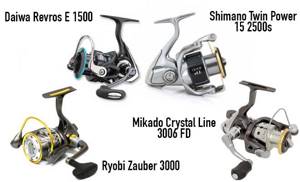
So, the top 10 spinning reels:
- Abu Garcia Ambassadeur SX-6600 (6601). This meat grinder may be expensive in monetary terms, but in terms of operational reliability it is a clear favorite in spinning fishing. Durable but lightweight aluminum body, miniature but spacious spool. Four bearings and an easy-to-adjust clutch. King of the Jig!
- Daiwa REVROS E 1500 A. Ultralight lovers will be pleased with its performance. The item is not the most expensive in price, but is made with decent quality. The main advantage is lightness, with a spool capable of absorbing 150 meters of 0.2 mm monofilament.
- SHIMANO TWIN POWER 15 2500S combines all the achievements in the field of innovative technologies. This option is ideal for twitch fishing. The main advantage is the waterproofness of the case, which has been tested in practice, and a large interval between servicing the mechanism. But the cost is high.
- RYOBI ZAUBER 3000. Classic inertia-free with a large margin of safety. Option for trolling fishing. The spool holds 200 meters of wattle with a diameter of 0.2 mm. Housing made of non-corrosive materials. Nine bearings ensure quiet and smooth operation. Average price level.
- Mikado CRYSTAL LINE 3006 FD is a purely trolling, budget version of the reel. A high gear ratio and a proven instant stop system give a feeling of reliability when fishing on the move. For beginners, their hobby of trolling is an ideal option.
- Shimano Rarenium 3000 - worthy of a place in the top due to its ability to lay out high-quality line, which completely eliminates the problem of dropping loops when casting unsuccessfully. The disadvantage is the high price. I recommend it to matcha lovers. Long casting is easy. The reel is not massive and fully meets the weight requirement, about 200 grams, for match rods.
- Daiwa Infinity-X 5500BR is a classic representative of feeder fishing reels. Massive spool, high gear ratio, baitrunner, all the amenities for comfortable carp fishing. The price corresponds to the high quality.
- STINGER PRIORITY 2500 - for twitching retrieves and light jigging. Budget option, but decent build. With regular technical inspections, it will last at least five seasons of intense fishing, proven by practice. Seven bearings really make the ride smooth, but there are problems with play in the handle.
- RYOBI EXCIA MX 3000 is an option for medium and heavy jigs. The spool's incredible line capacity, up to 200 meters of 0.18 mm braid, and its indelible collar make the model a long-lasting accessory in its owner's fishing arsenal. The price is tolerable, closer to budget.
- Shimano Ultegra-12 1000 is a super-light ultralight inexpensive model. High-quality thin clutch, special protection of the mechanism with effective lubrication. I recommend it to anyone new to spin fishing.
